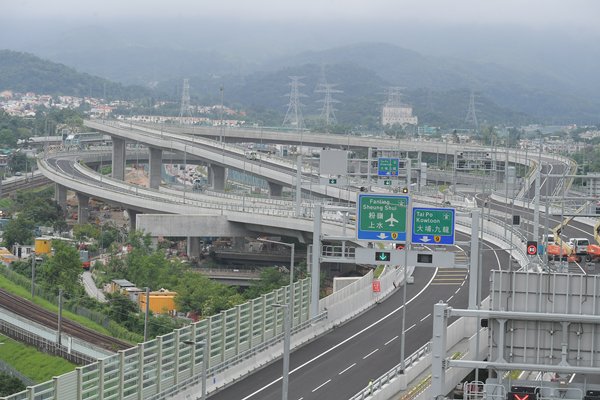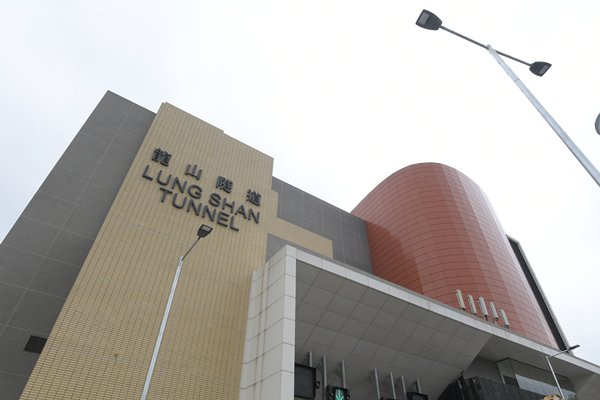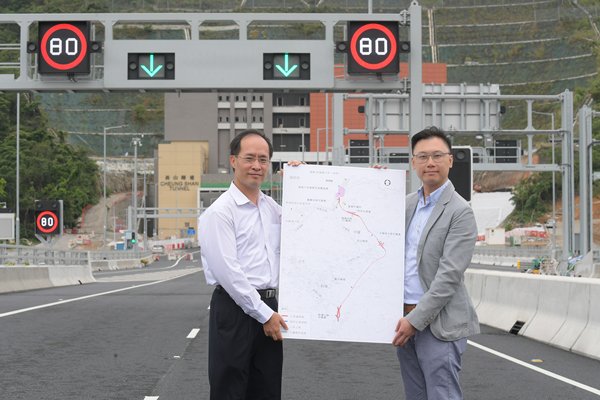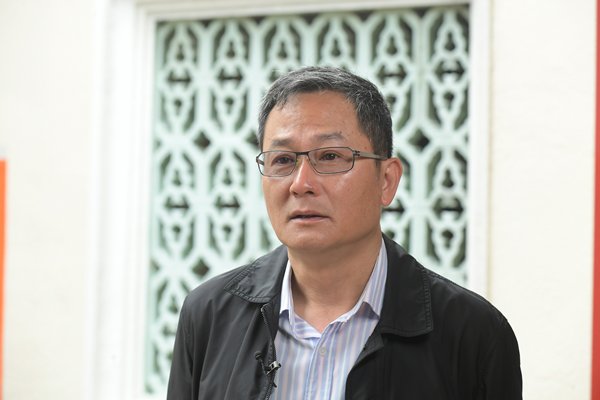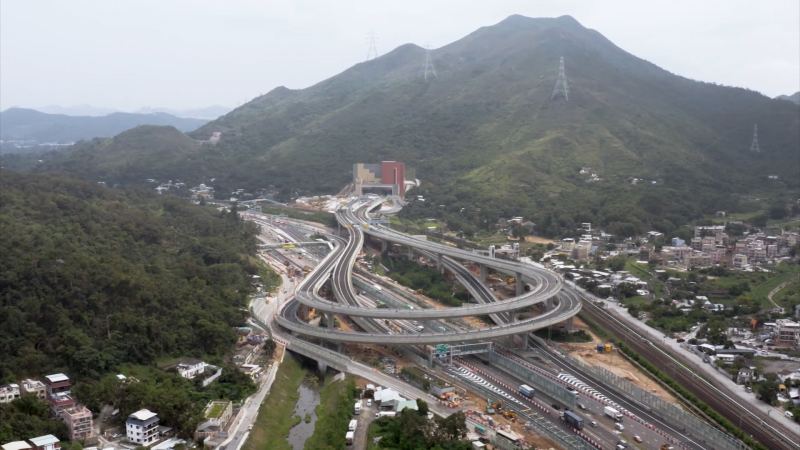New highway eases traffic
The new Heung Yuen Wai Boundary Control Point is the seventh land-based control point on the Shenzhen-Hong Kong boundary. The Heung Yuen Wai Highway connects the control point with Fanling Highway.
The dual two-lane Heung Yuen Wai Highway is about 11km long, where 5.7km are road tunnels and 4.3km viaducts.
Engineering feat
The highway includes the 4.8km Lung Shan Tunnel - the longest road tunnel in Hong Kong.
Marking a new record, Lung Shan Tunnel stretches 850m farther than Tate's Cairn Tunnel, Civil Engineering & Development Department Senior Engineer Michael Chan explained.
A number of unique engineering techniques had been adopted for the first time in Hong Kong during its construction, including the adoption of an earth pressure balanced tunnel boring machine with a diameter of 14.1m to tackle the excavation challenges brought about by the tunnel’s ground conditions.
When the tunnel boring machine completed the southbound tube excavation, it made two 90-degree turns inside the underground cavern to continue work for the northbound tube. This innovative technique was used for the first time in Hong Kong, saving construction time, minimising the impact on the environment and enhancing efficiency.
Travel convenience
The highway links up with Fanling Highway Interchange via Sha Tau Kok Road, Ping Yeung and Lin Ma Hang Road Interchanges. It will improve traffic in the North District and alleviate the busy traffic conditions in the Sha Tau Kok and Ta Kwu Ling area.
Mr Chan noted that it currently takes 15 minutes to travel from Loi Tung in Sha Tau Kok to Fanling Highway Interchange. With the new route, the journey time is only four minutes. Citing another example, he added that it takes only eight minutes from Ta Kwu Ling to Fanling Highway using the new route, reducing travel time by 16 minutes.
Ta Kwu Ling District Rural Committee Chairman Chan Yuet-ming and her Sha Tau Kok counterpart Benjamin Lee, both acknowledged that the new highway will not only alleviate the heavy traffic in their districts, but also be a boon to their economic development.
Civil Engineering & Development Department Engineer Jeffrey Luk added that the construction process was facilitated by the villagers’ co-operation.
The highway route passes through several villages and its construction affected some burial grounds. Fortunately, the village representatives helped resolve the issue, he said.
